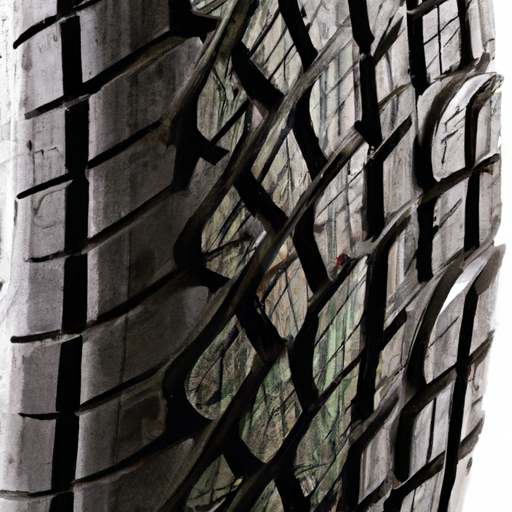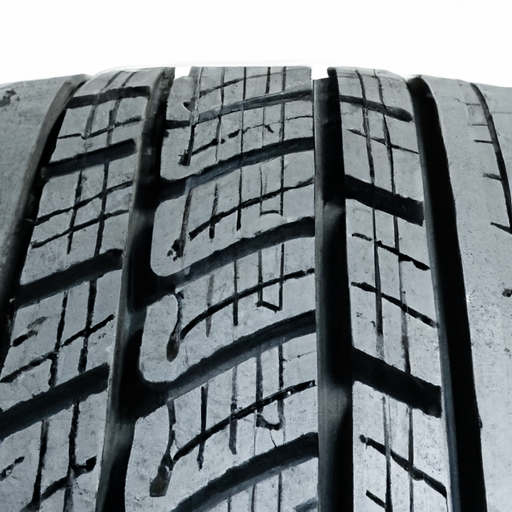Choosing the right tire profile for your wheels can make a significant difference in your driving experience. Whether you’re a car enthusiast or simply want to enhance your vehicle’s performance, understanding how to select the appropriate tire profile is essential. The tire profile refers to the height of the tire’s sidewall, and it plays a crucial role in aspects like comfort, handling, and fuel efficiency. So, buckle up and let’s explore the factors you need to consider when deciding on the perfect tire profile for your wheels.

Importance of Choosing the Right Tire Profile
Choosing the right tire profile for your wheels is of utmost importance as it has a significant impact on various aspects of your driving experience. From enhancing performance and improving safety to providing better handling and control, the tire profile plays a vital role in ensuring optimal performance of your vehicle. Furthermore, selecting the proper fitment for your wheels is imperative to ensure a secure and comfortable ride. Therefore, understanding and considering the various factors involved in choosing the right tire profile is crucial for a smooth and enjoyable driving experience.
Understanding Tire Profile
Definition of Tire Profile
The tire profile refers to the overall dimensions and characteristics of a tire. It includes factors such as tire width, aspect ratio, rim diameter, load index, speed rating, and tread pattern. These aspects collectively determine the size, shape, and performance capabilities of the tire.
Significance of Tire Profile
The tire profile is significant as it directly influences the performance, safety, and handling characteristics of your vehicle. Choosing the appropriate tire profile ensures optimal traction, stability, and control on different road surfaces and weather conditions. Moreover, it contributes to the overall comfort and durability of the tires.
Components of Tire Profile
The tire profile consists of various components that need to be taken into consideration while selecting the right tire for your wheels. These components include tire width, aspect ratio, rim diameter, load index, speed rating, and tread pattern. Each component plays a crucial role in determining the tire’s performance capabilities and compatibility with your vehicle.
Factors to Consider
When choosing the right tire profile for your wheels, several factors should be taken into account to ensure the perfect balance between performance, safety, and comfort. These factors include:
Vehicle Type and Purpose
The type of vehicle you own and its intended purpose are crucial factors in determining the appropriate tire profile. For example, a sports car would require low-profile tires to enhance handling and responsiveness, while an off-road vehicle would benefit from all-terrain tires with a more aggressive tread pattern.
Road Conditions
Consider the types of roads you frequently drive on. If you regularly encounter rough or uneven surfaces, opting for tires with a higher aspect ratio and a more robust tread pattern would provide better traction and durability. On the other hand, if you mostly drive on smooth and well-maintained roads, tires with a lower aspect ratio and a smoother tread pattern would offer improved handling and performance.
Weather Conditions
The climate and weather conditions in your area greatly affect tire performance. If you live in an area with frequent rain or snow, selecting tires with good wet or winter traction is essential for safety. Additionally, consider the temperature range in your region, as extreme temperatures can affect tire grip and lifespan.
Driving Style
Your driving style and preferences also play a crucial role in choosing the right tire profile. If you enjoy a more spirited driving experience, tires with a lower aspect ratio and a firmer sidewall would provide enhanced cornering capabilities. However, if you prioritize a smooth and comfortable ride, opting for tires with a higher aspect ratio and a softer sidewall would offer better shock absorption and ride comfort.
Tire Width
Effect of Tire Width on Performance
Tire width directly influences the performance of your vehicle in multiple ways. Wider tires generally provide improved traction and handling, especially during cornering. They offer a larger contact patch with the road, which enhances grip and stability. Additionally, wider tires tend to have a shorter braking distance, allowing for better stopping power.
Finding the Optimal Tire Width
To determine the optimal tire width, consider your vehicle’s manufacturer recommendations, as well as any local regulations that may limit the maximum tire width allowed. Additionally, consider the wheel width compatibility, as fitting tires that are too wide or too narrow for your wheels can lead to uneven wear, decreased performance, and potential safety issues.
Considerations for Narrower Tires
Narrower tires may offer better fuel efficiency and improved traction on snowy or icy surfaces due to their ability to “cut” through snow. They also tend to be quieter and provide a smoother ride. However, they may have reduced grip and stability when compared to wider tires, especially during aggressive driving maneuvers.
Considerations for Wider Tires
Wider tires provide increased grip, stability, and cornering performance. They can enhance the overall aesthetics of your vehicle by filling the wheel arches. However, they may negatively impact fuel efficiency, ride comfort, and noise levels. Additionally, wider tires may be more prone to hydroplaning in wet conditions due to their larger contact patch.

Aspect Ratio
Understanding Aspect Ratio
The aspect ratio of a tire refers to the ratio of its sidewall height to its width. It is expressed as a percentage. For example, if a tire has an aspect ratio of 50, it means the sidewall height is 50% of the tire’s width.
Effect of Aspect Ratio on Performance
The aspect ratio greatly affects the ride comfort, handling, and performance of a tire. Tires with a lower aspect ratio (e.g., 40 or below) are often referred to as low-profile tires. They provide better cornering stability, improved steering response, and a sportier appearance. However, they may result in a harsher ride and increased vulnerability to damage from potholes or rough roads.
On the other hand, tires with a higher aspect ratio (e.g., 60 or above) are known as high-profile tires. They offer better cushioning and shock absorption, resulting in a smoother and more comfortable ride. However, they may not provide the same level of responsiveness and cornering capabilities as low-profile tires.
Choosing the Appropriate Aspect Ratio
The choice of aspect ratio depends on several factors, including your desired ride comfort, handling preferences, and the type of driving you engage in. If you prioritize a sporty and responsive driving experience, opting for a lower aspect ratio can provide the desired performance attributes. Conversely, if ride comfort and noise reduction are your primary concerns, selecting a higher aspect ratio will offer the desired benefits.
Rim Diameter
Impact of Rim Diameter on Handling
The rim diameter plays a significant role in the handling and performance of your vehicle. Larger rim diameters generally allow for larger brake calipers and can accommodate wider tires, leading to enhanced cornering capabilities and improved grip. They can also provide a more aggressive and stylish appearance. However, larger rim diameters may result in a firmer ride and decreased comfort due to reduced tire sidewall height.
Finding the Suitable Rim Diameter
To choose the suitable rim diameter, consider the manufacturer’s recommendations for your specific vehicle model. It is essential to ensure that the selected rim diameter is compatible with the tire size and overall tire profile. It is also important to consider local regulations and clearance requirements to avoid any potential issues with fitting the tires.
Considerations for Smaller Rim Diameters
Smaller rim diameters can offer improved ride comfort, better shock absorption, and lower replacement costs compared to larger rim sizes. They may also provide better traction in off-road or snowy conditions due to the increased sidewall height. However, they may result in reduced handling capabilities and compromised aesthetics.
Considerations for Larger Rim Diameters
Larger rim diameters can enhance the aesthetics of your vehicle, giving it a more aggressive and sporty look. They can also improve handling characteristics, providing better cornering and braking performance. However, they may lead to a harsher ride and increased susceptibility to damage from potholes or road imperfections. Additionally, it is crucial to ensure that there is sufficient clearance between the tire and the vehicle’s suspension components.

Load Index
Definition of Load Index
The load index of a tire indicates the maximum load it can safely carry at a specified tire pressure. It is represented by a numerical value which corresponds to a specific load capacity. The higher the load index number, the greater the tire’s load-carrying capacity.
Importance of Load Index
Selecting the appropriate load index is crucial for maintaining the safety and integrity of your tires. An insufficient load index can lead to tire failure, decreased handling performance, and potential safety hazards. It is essential to ensure that the load index of your tires is suitable for the weight and load requirements of your vehicle.
Identifying the Proper Load Index
To identify the proper load index for your vehicle, refer to the manufacturer’s guidelines or consult with a tire professional. The load index requirements depend on the specific vehicle model, weight distribution, and intended usage. It is vital to accurately determine the load index to ensure the tires can safely carry the anticipated load without compromising safety or performance.
Speed Rating
Understanding Speed Rating
The speed rating indicates the maximum speed at which a tire can safely operate. It is denoted by a letter and corresponds to a specific speed range. The speed ratings are standardized, ensuring consistency across different tire manufacturers.
Significance of Speed Rating
Choosing the appropriate speed rating is essential for ensuring optimal performance, safety, and durability of your tires. Operating a tire beyond its designated speed rating can lead to excessive heat build-up, tire failure, and increased risk of accidents. It is crucial to select tires with a speed rating that matches or exceeds the maximum speed capabilities of your vehicle.
Selecting the Right Speed Rating
To select the right speed rating, consider the maximum speed capabilities of your vehicle, as well as your typical driving habits and conditions. If you regularly drive at high speeds or own a high-performance vehicle, opting for tires with a higher speed rating is recommended. However, for regular passenger vehicles that adhere to speed limits, tires with a lower speed rating may be more suitable.

Tread Pattern
Importance of Tread Pattern
The tread pattern of a tire greatly affects its grip, traction, and performance in various driving conditions. Different tread patterns are designed to excel in specific scenarios, such as wet roads, snowy conditions, or off-road terrains. Choosing the appropriate tread pattern ensures optimal performance and safety in the intended driving conditions.
Different Types of Tread Patterns
There are several common tread patterns available, each with its unique characteristics and advantages. These include summer tires with shallow and smooth tread for enhanced dry road performance, all-season tires with a versatile tread pattern for a balance of performance in various conditions, winter tires with deeper grooves and sipes for improved traction in snow and ice, and all-terrain tires with aggressive tread patterns for off-road capabilities.
Choosing the Suitable Tread Pattern
When choosing the suitable tread pattern, consider the typical driving conditions you encounter. If you live in an area with changing seasons and encounter both dry and wet roads, all-season tires with a suitable tread pattern would be a good choice. If you frequently drive on snow or ice-covered roads, dedicated winter tires with the appropriate tread pattern will provide the necessary traction and safety. Likewise, if off-road driving is part of your routine, all-terrain tires with an aggressive tread pattern will offer improved capability and durability.
Consulting the Manufacturer’s Recommendations
Manufacturer’s Guidelines
To ensure optimal performance and compatibility, it is highly recommended to consult the manufacturer’s guidelines when choosing the right tire profile. The manufacturer’s recommendations take into account various factors specific to your vehicle model, such as the suspension, braking system, and overall design. Following these recommendations safeguards the warranty, safety, and overall performance of your vehicle.
Promoting Optimal Performance
Choosing the right tire profile is crucial for promoting optimal performance, safety, and handling of your vehicle. By understanding the tire profile components, considering the various factors involved, and consulting the manufacturer’s recommendations, you can select the perfect tire profile for your wheels. This will result in a smoother ride, enhanced traction, better control, and improved longevity of your tires. Be sure to take your driving style, vehicle type, road and weather conditions, and load requirements into account to make an informed decision about the tire profile that best suits your needs. Remember, choosing the right tire profile is an investment in both your safety and driving enjoyment.


